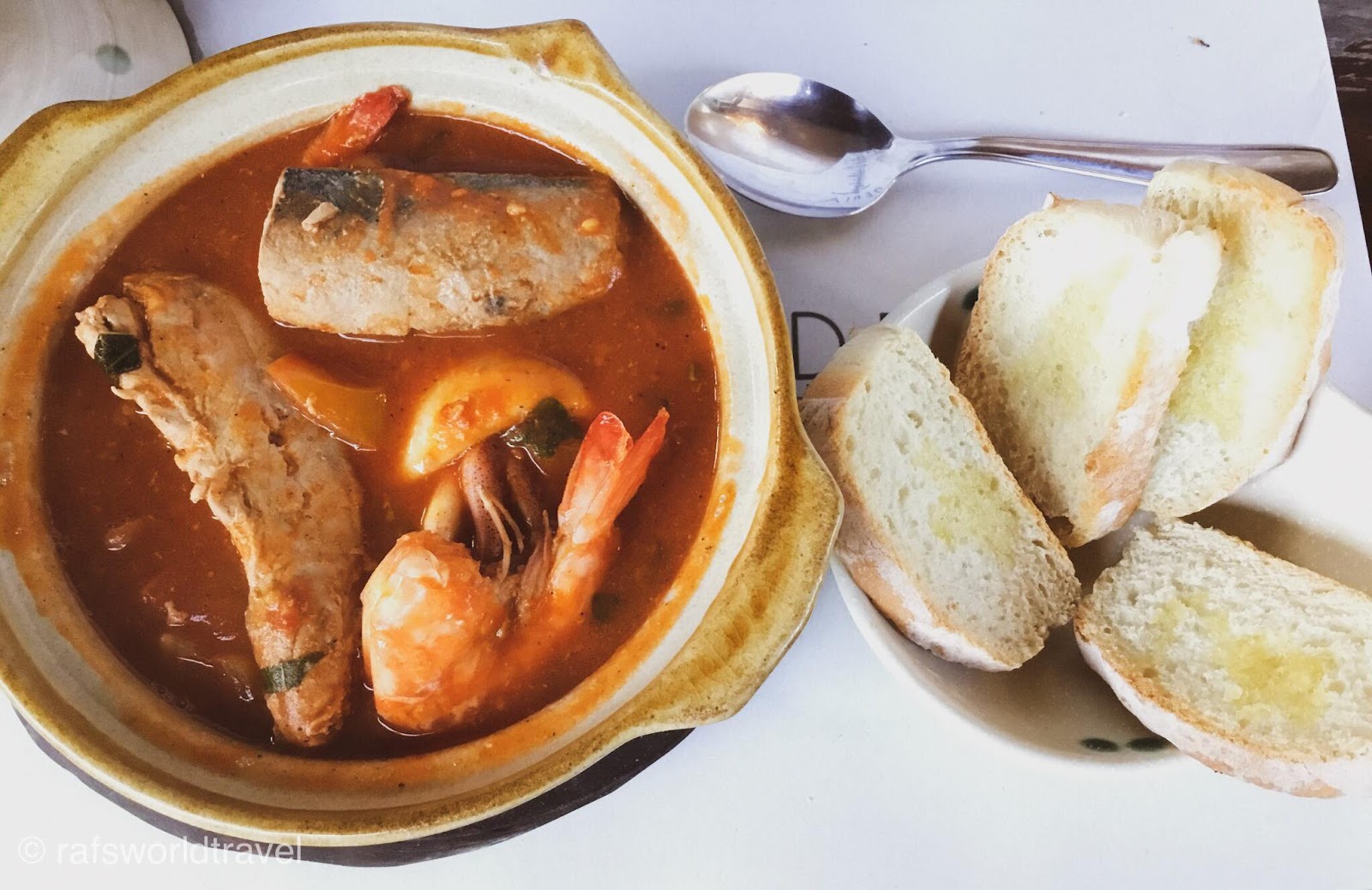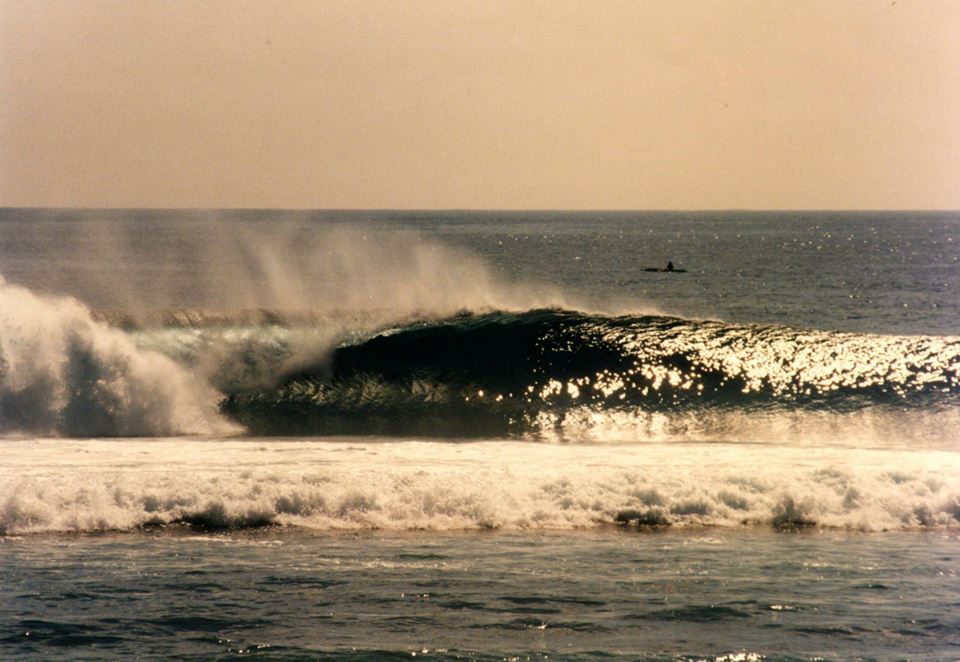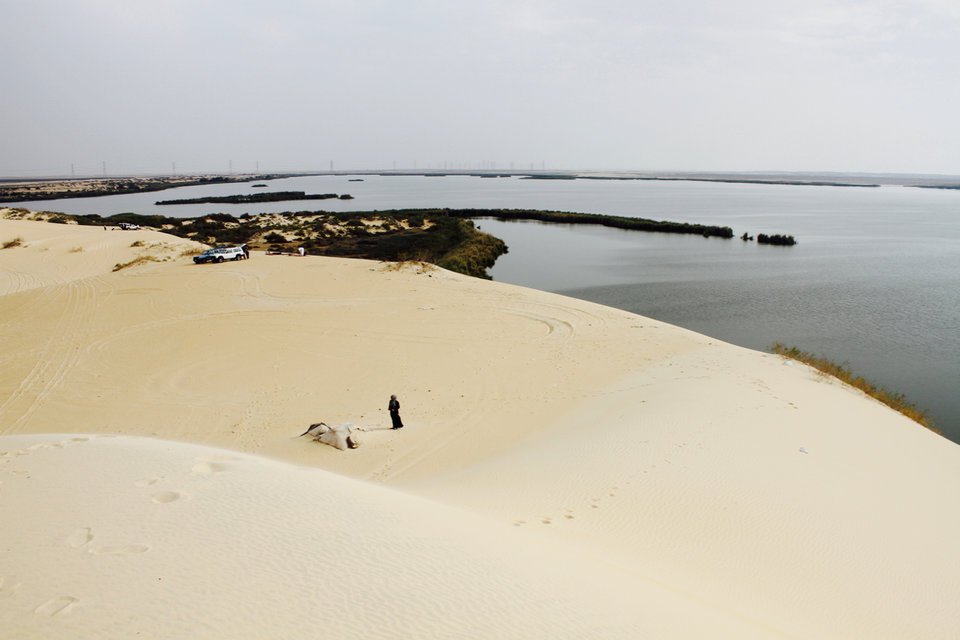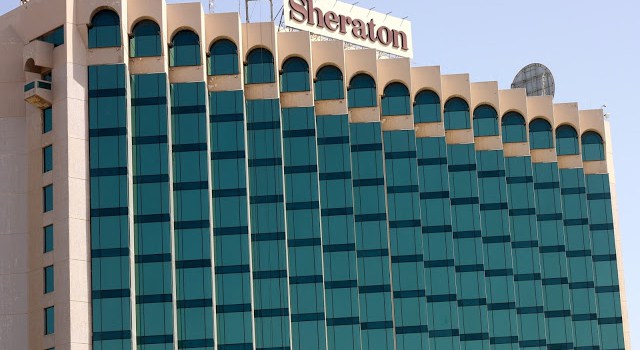Paradise Lost on Siargao Island, Philippines
Just over twenty years ago, the Aska Queen fast craft cruised across the Surigao Straits towards mystical Siargao Island. Among chickens, boxes of noodles, fresh produce and throngs of Filipinos were two surfboards. Both mine. Back then there were no flights and the few who made it out this far had to work a little to get there. However, truly magical views from the top of the boat and conversation with a few locals more than compensated for a somewhat arduous journey. The shear abundance of coconut trees, clarity of the sea water and blindingly white sands astounded me upon approach to Dapa. I stepped onto the rustic wooden pier and didn’t realise this paradise island was about to change the course of my life.
From the outset, it was clear most Siargao residents couldn't see what was right in front of their eyes. Back then the place epitomized paradise, but it was a just a place to live for them. Tall, swaying palm trees represented copra-based income and not beauty. Typhoon swells created nautical challenges for fishermen who never envisaged the explosion in wave-related income. Delightfully low key tourism found Magpupunkgko, Sugba Lagoons and Daco Island empty day after day. While cocktails, infinity pools and plush air conditioned rooms weren't available yet, Siargao's god-given beauty swiftly won my heart within hours of arrival.
Over the years that followed, the island became a huge part of my life. I married a local girl, built a native-style home and started a family there. None of us early visitors had the foresight that Siargao's appeal would grow to the levels seen today. While part of me regrets not investing in more land, I feel a greater honour being part of its first expatriate community. You see the winners get to write history. And this article is the history of a paradise losing its way through my eyes. It includes, words, vintage pictures and a forty-two minute documentary which reveals whenever you arrived was probably already too late.
In September 1997, I checked into a rustic Filipino-run resort: Jade Star. It didn’t take too long to find an island routine: surfing all day, relaxing in a hammock early evening, supping seven peso beers at night. I didn’t have a worry in the world.
I’ll never forget one particular day surfing Cemetaries, when the only other surfer out, a young kid, offered to paddle me in on his dugout canoe. His name was Eloy Nogalo, just thirteen years old, cousin of my future wife and now infamous Siargao surf instructor at Kermit. Just before Eloy dropped me off, God painted a magnificent canvas all over the sky. Moments like that sealed my love for the island.
After twelve magical weeks on Siargao, it was time to head home. I abandoned all future plans to visit Australia or Fiji. The search was over. Paradise found. I knew where I wanted to live for the rest of my life.
Alongside surfing every day, I became mildly addicted to Tanduay Rhum and wrapped up with singers from Surigao and the local entertainment scene: 7 eleven and Kings. While my brother and Aaron left before Christmas, I stayed on until the wet season subsided and discovered Cloud 9’s second season: March-April. Mornings were more or less empty as locals only had a few surfboards, and I reveled in day after day of glassy perfection. It was an unforgettable winter for the few of us who shared it.
Two and half years later, our island romance culminated in marriage. I brought a crowd of guys from Cornwall for the wedding in March 2003. While Stimpeys got a bit crowded with 12 of us out some days, it didn’t take a lot of effort to find a bit of solace at Pacifico, Pilar or Daco. However, sleepy General Luna got a bit of a wake up from the rowdy crew. Every night we gathered at Lourdes Store for cheap beer and 50 peso vegetable curry, then danced into the night at a rustic little disco house. The wedding went well and all the guests vowed to return one day; such was the hypnotic appeal of the island.
The most disturbing event occurred alongside our wedding celebrations. A newly arrived German, called Andreas Mikoleiczik, unveiled his plan for Pisangan Beach: an eight-fold rent increase. Over the months that followed he slowly took control of the entire resort. He offered what many mainstream tourists look for: organized tours, air conditioning and European food. Sadly, this was the beginning of the end of the cheap beach life in General Luna.
The following September at Tuason I was surfing alone as usual. Out of nowhere an Australian paddled up to me and asked me why it was so empty. He revealed plans for his own dream house for himself and a few friends. One year later his resort’s boat dropped off fifteen long boarders at Tuason. Turned out his house for a few friends was one of myriad new large resorts springing up along tourist road.
The tide turned in 2011-12. Paradise had to be shared. A quiet surf or picnic could no longer be guaranteed anywhere.
From the outset, it was clear most Siargao residents couldn't see what was right in front of their eyes. Back then the place epitomized paradise, but it was a just a place to live for them. Tall, swaying palm trees represented copra-based income and not beauty. Typhoon swells created nautical challenges for fishermen who never envisaged the explosion in wave-related income. Delightfully low key tourism found Magpupunkgko, Sugba Lagoons and Daco Island empty day after day. While cocktails, infinity pools and plush air conditioned rooms weren't available yet, Siargao's god-given beauty swiftly won my heart within hours of arrival.
Over the years that followed, the island became a huge part of my life. I married a local girl, built a native-style home and started a family there. None of us early visitors had the foresight that Siargao's appeal would grow to the levels seen today. While part of me regrets not investing in more land, I feel a greater honour being part of its first expatriate community. You see the winners get to write history. And this article is the history of a paradise losing its way through my eyes. It includes, words, vintage pictures and a forty-two minute documentary which reveals whenever you arrived was probably already too late.
Paradise Defined: Siargao in the late 1990’s
In July 1992, famous surf photographer John Callaghan arrived on Siargao with a crew of American surfers. Surfer Magazine published his article soon after. Although Callaghan didn’t pinpoint the location, a French magazine quickly unveiled the secret which inspired my first trip five years later.In September 1997, I checked into a rustic Filipino-run resort: Jade Star. It didn’t take too long to find an island routine: surfing all day, relaxing in a hammock early evening, supping seven peso beers at night. I didn’t have a worry in the world.
I’ll never forget one particular day surfing Cemetaries, when the only other surfer out, a young kid, offered to paddle me in on his dugout canoe. His name was Eloy Nogalo, just thirteen years old, cousin of my future wife and now infamous Siargao surf instructor at Kermit. Just before Eloy dropped me off, God painted a magnificent canvas all over the sky. Moments like that sealed my love for the island.
After twelve magical weeks on Siargao, it was time to head home. I abandoned all future plans to visit Australia or Fiji. The search was over. Paradise found. I knew where I wanted to live for the rest of my life.
Winter 1998-1999
Nine months later, after saving up funds in UK, Cornwall, I flew back to Philippines in September 1998. I brought my brother Colin and friend Aaron with me. I guess I couldn’t keep paradise to myself. Pisangan Resort charged us just 2000 pesos a month for an amazing beach front cottage. Although plenty of Australian surfers turned up for prime surf season, by December almost every foreigner had left and wet season waves like Stimpeys and Giwan were deliciously empty.Alongside surfing every day, I became mildly addicted to Tanduay Rhum and wrapped up with singers from Surigao and the local entertainment scene: 7 eleven and Kings. While my brother and Aaron left before Christmas, I stayed on until the wet season subsided and discovered Cloud 9’s second season: March-April. Mornings were more or less empty as locals only had a few surfboards, and I reveled in day after day of glassy perfection. It was an unforgettable winter for the few of us who shared it.
Paradise Continues: Siargao in the early 2000’s
Siargao became home again for two year-long stays in summer 2000 and 2002. Sustainable, minimal tourism kept fish, beer and rent prices super stable. My simple cottage right on the beach felt like paradise defined: stunning views, white sand, and warm seas out front. All for $40 monthly. Shared with just a few friends, notably Ross and Auzzie Pete, the waves remained ridiculously empty. September 2000’s super typhoon swells sent perfect swells into the Philippine coast. While Cloud 9 had a mini-crowd on it, the bommie and Tuason Point offered translucent walls and barrels for my board alone.Romance
In October 2000, I began to date the girl of my dreams: Mirasol Nogalo. Our romance blossomed against the unbelievably perfect backdrops of Siargao, where we swam, fished and surfed together. I’ll forever remember the countless times we paddled over to Guyam Island in a dugout for a kinelaw picnic on the beach. Simple dates like these, alone together in a total paradise, made it easy to fall in love.Two and half years later, our island romance culminated in marriage. I brought a crowd of guys from Cornwall for the wedding in March 2003. While Stimpeys got a bit crowded with 12 of us out some days, it didn’t take a lot of effort to find a bit of solace at Pacifico, Pilar or Daco. However, sleepy General Luna got a bit of a wake up from the rowdy crew. Every night we gathered at Lourdes Store for cheap beer and 50 peso vegetable curry, then danced into the night at a rustic little disco house. The wedding went well and all the guests vowed to return one day; such was the hypnotic appeal of the island.
The most disturbing event occurred alongside our wedding celebrations. A newly arrived German, called Andreas Mikoleiczik, unveiled his plan for Pisangan Beach: an eight-fold rent increase. Over the months that followed he slowly took control of the entire resort. He offered what many mainstream tourists look for: organized tours, air conditioning and European food. Sadly, this was the beginning of the end of the cheap beach life in General Luna.
The Final Good Year: 2006
Marital responsibilities took me away from the island in 2004 and 2005, but we returned for typhoon season in 2006. That was the last amazing stint on the island: 60 days of near constant typhoon swells and minimal changes or crowds. Of course Pisangan Beach was now Patricks, so we decided to live with Mirasol’s family in barangay alingit. While a few changes were evident down at Cloud 9, namely a lot more concrete walls and structures, Siargao remained an incredible place to surf and hang out. Convinced by the stability, I decided to return to UK for two more years to save up for a small lot and wooden house.The Tide Turns: Siargao in the late 2000’s/early 2010’s
In spring 2008 we stopped by Siargao for a few weeks to check our newly purchased plot of land. Opposite the land was a rental home. On the day we walked down to the land, five white guys were shouting obscenities at a radio program about Noah’s Ark. It might seem like nothing, but it left me with a slightly sunken feeling about Siargao; the first of many. Days later several guests from a newly constructed European-run resort swamped the early morning waves at Cloud 9. In addition, vegetable and fish prices had gone through the roof and nightly noise from fashionable Nine Bar boomed across the village. However, I ignored these ripples of discontentment and returned to UK to save a few more thousand pounds for house construction.A Dream Fulfilled
Initially, it felt like a dream fulfilled when we returned to Siargao in 2009 to build our tropical home. Finally, after a few years working in UK, it was time to settle back into island living. For less than US$15K we purchased a new plot of land more or less where our wedding reception had been held and put up a large, Philippine-style wooden home right in the middle of barangay alingit. Alingit roughly translated means angry and it wasn’t too long before we encountered some neighbourhood issues. The ensuing arguments over a couple of coconuts dampened our spirits considerably.Wave trouble
Alongside these personal challenges, it became apparent Siargao of 2010 was a very different place to 1997-2006. Gone were the Australian surfers of olde, replaced with a new wave of European visitors keen to escape the northern hemi winter. One day at Salvacion my brother in law and I were surfing alone, suddenly two boat loads of tourists arrived and two became eighteen. While the resort owner who had brought them apologised, I caught the next wave in and wondered what might happen in a few more years.The following September at Tuason I was surfing alone as usual. Out of nowhere an Australian paddled up to me and asked me why it was so empty. He revealed plans for his own dream house for himself and a few friends. One year later his resort’s boat dropped off fifteen long boarders at Tuason. Turned out his house for a few friends was one of myriad new large resorts springing up along tourist road.
The tide turned in 2011-12. Paradise had to be shared. A quiet surf or picnic could no longer be guaranteed anywhere.
Unabated Decimation: Present Day Siargao
Huge development projects picked up during my final two years of living full-time on Siargao. Between 2013 and 2015 the government ordered the removal of hundreds of old trees to make way for a new conrete road to Cloud 9. While many residents and resort owners criticized the destruction, they only had themselves to blame. Booming tourist numbers and large 4X4’s made the old, dusty road unviable. Simply too many foreigners had put up a few cottages. The improved infrastructure, alongside slick website and social media campaigns, catipaulted Siargao towards its inevitable future as Philippine’s Bali.God’s Finest Work
In the 1999 documentary “Gen Luna:Surfers, Sailors and Missionaries” the German director asked whether paradise could bear the future burden of large scale tourism. Nineteen years later and it’s quite clear the island is creaking. Every day Siargao locals publicize disturbing developments on instagram (thanks my friends @anamaealipayo and @party_sleep), but no one can stop it now. Sugba Lagoons resembles a Manila swimming pool and a four storey hotel will apparently destroy the iconic Cloud 9 skyline within a year. Let’s just hope the benefits for the islanders, in terms of financial and employment opportunities, outweigh the loss of one of God’s finest works.#Save Siargao
While God’s virgin tropical island created long ago has definitely been lost, Siargao today still offers a version of paradise. As depicted in the slickly produced, drone footage heavy tagalog movie “Siargao“, the island’s abundant trees, wide open roads and undiscovered beaches will probably attract hundreds of thousands of new visitors in the next few years. It’s up to all of us (locals, expatriates, visitors and the local government) to do our best to ensure Siargao’s remaining soul is saved rather than destroyed completely. And it’s going to take a lot more than a hashtag to do that!Images from a paradise lost
...






















Very well written... I love the story on how you're able to witnessed the undeveloped place and until it discovered... I can relate in this matter the place where my father live... It's me and my group who researched it and gathered all the natural resources that's possible for Ecotourism Development. It's now boom... now a lot of people visit to the beach we used to play when we're very young but honestly, I don't know if I've help or I made it worsts for the residents! I just hope and wish Filipinos learn to put the trash in the proper place... It's still clean but I hope the government and owners of the properties can strictly implement rules that guest can follow and give fines for those who throw their trash everywhere!
ReplyDeleteThanks so much for taking the time to read the post, April. Let’s hope for positive developments in all Philippine tourism areas in the future.
DeleteI saw the documentary today, It says 2003.
ReplyDeleteI visited Boracay for the first time in the late 70s, and camped just off the beach, under the coconut trees, in what is probably station 2 , or station 3. There was nobody there. We had to find a hut, with a water pumps o we could bathe.
I went back every couple of years, and it was a shock, each time. I guess the same will happen to Siargao. I havent been back to Boracay in 3 or 4 years. Itts too much like Makati. Full of military age mainland Chinese, and more come in every day.
Sadly, you're right! Siargao will inevitably suffer the same fate as Boracay and Bali.
DeleteYou are blessed to have witnessed Siargao in the 90's. I first step foot on the island way back 2009 but only been in Dapa for a short work appointment. My 2nd was in summer of 2014 where we go for a vacation with my friends at General Luna, the main road was still uncemented back then. But when I returned in Sept 2014 to witness the International Surfing Cup, the gov't has already cemented some portions of the road while other portions were still ongoing construction. A friend of mine use to work at DPWH that was assigned there as Supervising Engineer, so I stayed at there bunkhouse for a week in Catangnan particularly at the unfinished Sunset Bridge at that time. The bars were alive and I always got home at our bunkhouse drunk every night. I've always visited the island almost 3-4x a year in 2017-2019, mostly for work & leisure. In 2020, the covid-19 pandemic came that has immensely affected the economic activities there. I've been there in October 2020 for work again, and the road was so empty with lots of establishments still closed. Almost no hostel was operating at that time, and the only one who accepted me as their guest was the Wayfarers owned by an Englishman. In July 2021, I visited again GL for work and some establishments are starting to operate again. In December 16, 2021, the Island was badly affected by the super typhoon "Odette." I visited again the island in March and then in April (Holy week holiday), the remnants of the damages from the typhoon are still visible but the tourists is starting to grow in numbers again. I lived in Butuan City, just a few hours of travel to the island and I feel blessed to have frequently visited it. I fell in loved with the island not just the scenery but also the people and the good vibes that comes with it.
ReplyDelete